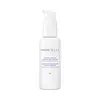What's inside
What's inside
 Key Ingredients
Key Ingredients

 Benefits
Benefits

 Concerns
Concerns

No concerns
 Ingredients Side-by-side
Ingredients Side-by-side

Water
Skin ConditioningGlycerin
HumectantCamellia Japonica Seed Oil
EmollientCetearyl Olivate
Squalane
EmollientCaprylic/Capric Triglyceride
MaskingCetearyl Alcohol
EmollientGlyceryl Stearate
EmollientSorbitan Olivate
EmulsifyingGlyceryl Caprylate
EmollientPentylene Glycol
Skin ConditioningButyrospermum Parkii Butter
Skin ConditioningArgania Spinosa Kernel Oil
EmollientRubus Idaeus Seed Oil
EmollientRosa Canina Seed Oil
EmollientLinoleic Acid
CleansingLinolenic Acid
CleansingTocopherol
AntioxidantVitis Vinifera Fruit Cell Extract
Skin ConditioningBisabolol
MaskingOpuntia Ficus-Indica Seed Oil
EmollientAcer Rubrum Bark Extract
Skin ConditioningPicea Mariana Bark Extract
AntioxidantBetula Alleghaniensis Bark Extract
Skin ConditioningPinus Banksiana Bark Extract
Skin ConditioningCaprylhydroxamic Acid
Xanthan Gum
EmulsifyingIsomalt
HumectantTerminalia Ferdinandiana Fruit Extract
AntioxidantLecithin
EmollientCitrus Tangerina Peel Oil
MaskingWater, Glycerin, Camellia Japonica Seed Oil, Cetearyl Olivate, Squalane, Caprylic/Capric Triglyceride, Cetearyl Alcohol, Glyceryl Stearate, Sorbitan Olivate, Glyceryl Caprylate, Pentylene Glycol, Butyrospermum Parkii Butter, Argania Spinosa Kernel Oil, Rubus Idaeus Seed Oil, Rosa Canina Seed Oil, Linoleic Acid, Linolenic Acid, Tocopherol, Vitis Vinifera Fruit Cell Extract, Bisabolol, Opuntia Ficus-Indica Seed Oil, Acer Rubrum Bark Extract, Picea Mariana Bark Extract, Betula Alleghaniensis Bark Extract, Pinus Banksiana Bark Extract, Caprylhydroxamic Acid, Xanthan Gum, Isomalt, Terminalia Ferdinandiana Fruit Extract, Lecithin, Citrus Tangerina Peel Oil
Water
Skin ConditioningIsononyl Isononanoate
EmollientGlycerin
HumectantPropanediol
SolventC10-18 Triglycerides
EmollientC14-22 Alcohols
Emulsion StabilisingNiacinamide
SmoothingSodium Hyaluronate
Humectant1,2-Hexanediol
Skin ConditioningHydroxyethyl Acrylate/Sodium Acryloyldimethyl Taurate Copolymer
Emulsion StabilisingSqualane
EmollientDimethicone
EmollientCetyl Palmitate
EmollientC12-20 Alkyl Glucoside
EmulsifyingSodium Gluconate
Skin ConditioningCaprylhydroxamic Acid
Polysorbate 60
EmulsifyingXanthan Gum
EmulsifyingSorbitan Isostearate
EmulsifyingGlucose
HumectantCI 77891
Cosmetic ColorantWater, Isononyl Isononanoate, Glycerin, Propanediol, C10-18 Triglycerides, C14-22 Alcohols, Niacinamide, Sodium Hyaluronate, 1,2-Hexanediol, Hydroxyethyl Acrylate/Sodium Acryloyldimethyl Taurate Copolymer, Squalane, Dimethicone, Cetyl Palmitate, C12-20 Alkyl Glucoside, Sodium Gluconate, Caprylhydroxamic Acid, Polysorbate 60, Xanthan Gum, Sorbitan Isostearate, Glucose, CI 77891
Ingredients Explained
These ingredients are found in both products.
Ingredients higher up in an ingredient list are typically present in a larger amount.
Caprylhydroxamic Acid is a chelating agent.
Chelating agents help prevent metal ions from binding to other ingredients. This helps prevent unwanted reactions and effects from using the product.
Caprylhydroxamic Acid is often used with natural antimicrobial products as an alternative to preservatives.
Learn more about Caprylhydroxamic AcidGlycerin is already naturally found in your skin. It helps moisturize and protect your skin.
A study from 2016 found glycerin to be more effective as a humectant than AHAs and hyaluronic acid.
As a humectant, it helps the skin stay hydrated by pulling moisture to your skin. The low molecular weight of glycerin allows it to pull moisture into the deeper layers of your skin.
Hydrated skin improves your skin barrier; Your skin barrier helps protect against irritants and bacteria.
Glycerin has also been found to have antimicrobial and antiviral properties. Due to these properties, glycerin is often used in wound and burn treatments.
In cosmetics, glycerin is usually derived from plants such as soybean or palm. However, it can also be sourced from animals, such as tallow or animal fat.
This ingredient is organic, colorless, odorless, and non-toxic.
Glycerin is the name for this ingredient in American English. British English uses Glycerol/Glycerine.
Learn more about GlycerinSqualane is an emollient that helps the skin hold onto moisture. It's an oily liquid that occurs naturally in certain types of fish and plant oils.
Because squalane boosts hydration in the skin, it also comes with plenty of benefits: it is an antioxidant and can help fight free radicals and skin damage. Squalane is also found to have a detoxifying effect when applied.
Squalane comes from squalene, which occurs naturally within the sebum of our skin. It is one of the oils our skin produces to keep itself hydrated. Squalane is the hydrogenated version of squalene and has a longer shelf life.
Research shows that squalane is non-irritating (even at 100% concentration).
In general, it's a fantastic ingredient. It does a great job at hydrating the skin, and it's suitable for those with sensitive skin.
The source of squalane may impact malassezia / fungal acne. This is because olive oil derived squalane can contain impurities such as fatty acids and plant waxes. Sugarcane derived squalane is recommended for anyone with malassezia concerns.
Is squalane vegan?
This depends on the source. Squalane can be derived from both plants and animals. Most squalane used in skincare comes from plants.
Please note: the source of squalane is only known if disclosed by the brand. We recommend reaching out to the brand if you have any questions about their squalane.
Read more about squalene with an "e".
Is squalane an oil?
Squalane is often called an oil, but it’s technically not; it’s a hydrocarbon, meaning it’s only made of carbon and hydrogen, unlike true oils which are triglycerides made of fatty acids and glycerol.
The term “oil-free” isn’t regulated, so companies can define it however they want. Some exclude all oils, while others just avoid mineral oil or comedogenic oils.
While some people avoid oils thinking they cause breakouts, the right kind of oil (or oil-like ingredient like squalane) can actually help balance and hydrate your skin. It’s worth testing out simple oils or squalane to see what works best for your skin.
Learn more about SqualaneWater. It's the most common cosmetic ingredient of all. You'll usually see it at the top of ingredient lists, meaning that it makes up the largest part of the product.
So why is it so popular? Water most often acts as a solvent - this means that it helps dissolve other ingredients into the formulation.
You'll also recognize water as that liquid we all need to stay alive. If you see this, drink a glass of water. Stay hydrated!
Learn more about WaterXanthan gum is used as a stabilizer and thickener within cosmetic products. It helps give products a sticky, thick feeling - preventing them from being too runny.
On the technical side of things, xanthan gum is a polysaccharide - a combination consisting of multiple sugar molecules bonded together.
Xanthan gum is a pretty common and great ingredient. It is a natural, non-toxic, non-irritating ingredient that is also commonly used in food products.
Learn more about Xanthan Gum